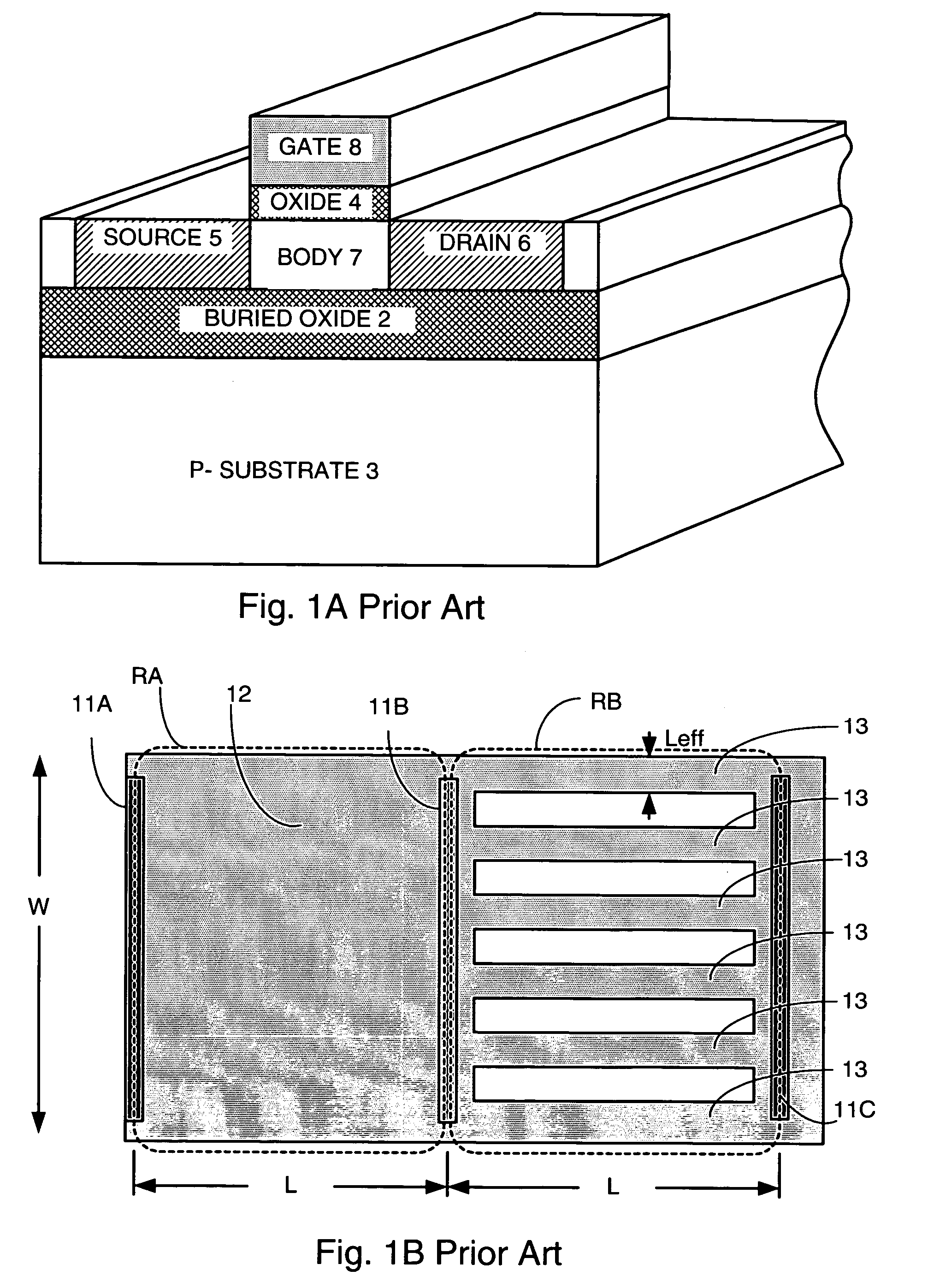Polysilicon conductor width measurement for 3-dimensional FETs
a polysilicon conductor and 3-dimensional fet technology, applied in the direction of semiconductor/solid-state device testing/measurement, semiconductor device details, semiconductor/solid-state device testing/measurement, etc., can solve the problem of gate oxide leakage through the gate oxide, the fet scaling is currently running into limits, and the gate oxide thin
- Summary
- Abstract
- Description
- Claims
- Application Information
AI Technical Summary
Benefits of technology
Problems solved by technology
Method used
Image
Examples
Embodiment Construction
[0031]The invention will be described in detail with reference to the figures. It will be appreciated that this description and these figures are for illustrative purposes only, and are not intended to limit the scope of the invention. In particular, various descriptions and illustrations of the applicability, use, and advantages of the invention are exemplary only, and do not define the scope of the invention. Accordingly, all questions of scope must be resolved only from claims set forth elsewhere in this disclosure.
[0032]The current invention teaches a test structure apparatus that provides for easily determining a processed width of a polysilicon conductor that travels over one or more semiconductor “fins” on a FinFET semiconductor chip. A processed width is a final width of the polysilicon conductor after completion of a polysilicon etching step in a semiconductor process. The one or more semiconductor fins rise from a dielectric surface on the semiconductor chip. Although fins...
PUM
 Login to View More
Login to View More Abstract
Description
Claims
Application Information
 Login to View More
Login to View More - R&D
- Intellectual Property
- Life Sciences
- Materials
- Tech Scout
- Unparalleled Data Quality
- Higher Quality Content
- 60% Fewer Hallucinations
Browse by: Latest US Patents, China's latest patents, Technical Efficacy Thesaurus, Application Domain, Technology Topic, Popular Technical Reports.
© 2025 PatSnap. All rights reserved.Legal|Privacy policy|Modern Slavery Act Transparency Statement|Sitemap|About US| Contact US: help@patsnap.com



